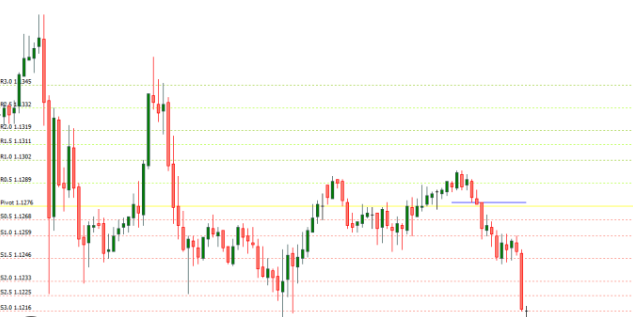Pivot Resistance Support Indicator Review
In the world of technical analysis, identifying key levels of support and resistance is crucial for successful trading. These levels can provide valuable insights into market trends and potential price movements, allowing traders to make informed decisions about when to enter or exit positions.
One tool that can aid in this process is the Pivot Resistance Support Indicator (PRSI). The PRSI is a popular indicator used by many traders to identify key levels of support and resistance in various markets, including stocks, futures, and forex.

Download Free Pivot Resistance Support Indicator
This indicator uses pivot points – which are calculated based on previous highs, lows, and closing prices – to determine possible areas of support or resistance. By analyzing these levels alongside other technical indicators and market data, traders can gain a more comprehensive view of market trends and make more informed trading decisions.
In this article, we will explore the benefits of using the PRSI as well as strategies for incorporating it into your trading approach.
Understanding Key Levels of Support and Resistance
The present section delves into comprehending essential levels that impede a security’s upward or downward movement, ascertaining the significance of identifying these key levels for traders and investors.
Identifying price trends is essential in determining support and resistance levels. Support refers to a price level below which an asset has difficulty falling, while resistance refers to the opposite situation where it becomes hard for prices to rise beyond a specific level.
The key levels of support and resistance are characterized by historical price data from previous market movements. Importance of historical data plays a crucial role in identifying support and resistance levels since traders can use this information to determine patterns in price movements.
Historical data analysis enables traders to identify areas where buyers or sellers tend to enter the market, leading to significant changes in prices. By analyzing past trends, traders can determine whether a particular level is likely to hold or break based on how many times it has been tested previously.
Therefore, understanding key levels of support and resistance provides traders with critical information that they need when making trading decisions.
Benefits of Using the PRSI
The potential advantages of implementing the PRSI in technical analysis are numerous and significant.
Firstly, the indicator enables traders to identify key price levels with a high degree of accuracy. This is particularly useful for those who engage in swing or position trading as it provides them with reliable support and resistance levels to base their trades on.
Additionally, the PRSI can detect trend reversals, which is essential for identifying entry and exit points in any given market.
Secondly, the PRSI’s accuracy compares favorably against other indicators used in technical analysis. A study conducted by researchers at Brown University found that the pivot point system was more accurate than other popular indicators such as moving averages and Bollinger Bands.
Furthermore, unlike many other indicators that rely on complex algorithms and mathematical formulas, the PRSI is easy to use and interpret. Its simplicity makes it an attractive option for both novice traders looking to gain insight into market trends as well as experienced investors seeking a reliable tool to guide their decision-making processes.
Overall, these benefits make the PRSI an invaluable addition to any trader’s toolbox when analyzing price action in financial markets.
How to Incorporate the PRSI into Your Trading Strategy
Incorporating the PRSI into one’s trading strategy can be accomplished through a variety of methods.
One way is to analyze historical price data and identify key levels of support and resistance. The PRSI calculation can then be used to confirm or refute these levels, providing traders with additional insight into potential market movements.
Additionally, technical analysis software can be utilized to plot the PRSI on charts alongside other indicators such as moving averages or trend lines. This allows for a more comprehensive analysis of market trends and potential entry/exit points.
Another important aspect of incorporating the PRSI into one’s trading strategy is signal interpretation. Traders must understand how to interpret the signals provided by the indicator in order to make informed decisions about their trades.
For example, when the PRSI crosses above 50, it may indicate that buying pressure is increasing and that a bullish trend may be emerging. Conversely, when the PRSI crosses below 50, it may indicate that selling pressure is increasing and that a bearish trend may be emerging.
By understanding these signals and incorporating them into their overall trading strategy, traders can potentially increase their profitability while minimizing risk.
Conclusion
In conclusion, the Pivot Resistance Support Indicator (PRSI) is a valuable tool for traders looking to identify key levels of support and resistance.
By analyzing price action and identifying pivot points, the PRSI can help traders make informed decisions about when to enter or exit trades.
Its ability to adapt to changing market conditions makes it particularly useful for dynamic trading environments.
Furthermore, incorporating the PRSI into a comprehensive trading strategy can enhance overall performance by providing additional insights into market trends and potential entry/exit points.
However, like any technical indicator, it should be used in conjunction with other tools and analysis methods to increase its effectiveness.
Overall, the PRSI is an essential tool for any trader looking to improve their decision-making process and maximize profitability in today’s fast-paced markets.
